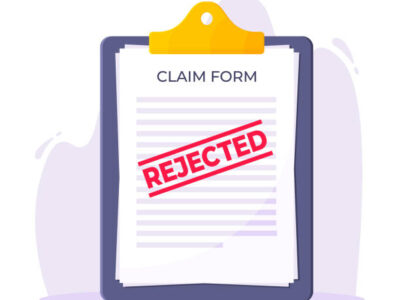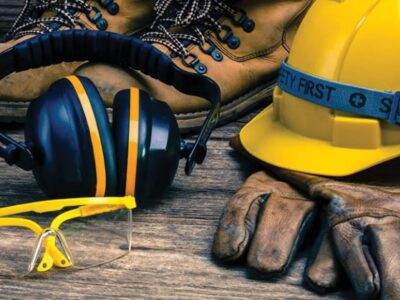As one of more than a million California residents who currently earn a living working in health care, you probably understand that experiencing job-related aches and pains is incredibly common in your line of work. At the Law Offices of Hussain & Gutierrez, we recognize that many health care-related injuries result from relocating immobile patients, and we have helped many nurses and other health care workers who experienced back and other work-related injuries pursue appropriate recourse.
According to Healthcare Business & Technology, one of the most significant threats facing today’s nurses, nursing aides and other health care workers is one that often receives little attention from employers: moving heavy patients. So many health care workers suffer serious injuries caused by moving patients, in fact, that this has become one of the most substantial health hazards faced by today’s health care workforce.
Just how widespread are back, neck, and other injuries caused by moving immobile patients? When it comes to nurses, exclusively, they suffer about 35,000 back and musculoskeletal injuries each year that are bad enough to keep them out of work. The problem has become so pronounced that modern nurses are more likely to suffer injuries than construction workers, manufacturers, and anyone else in jobs that involve exclusively physical labor.
Part of the threat comes from the fact that many hospitals, and particularly those in rural areas, fail to stock mechanical lift assistance equipment that can take much of the strain off of health care workers. In other cases, hospitals and similar medical environments fail to adequately train their workers about proper lifting techniques, even though utilizing them can lessen, though not eliminate, the risk of a lifting-related injury. You can learn more about workplace injuries on our webpage.
Understanding the Nature and Scope of Healthcare Worker Injuries
Nurses, aides, and physical therapists often face repetitive strain on their backs, shoulders, and knees. These injuries may happen abruptly during a patient transfer or develop over months due to poor ergonomics and high patient loads. Many hospitals still depend heavily on manual lifting, especially in underfunded or rural facilities.
Causes and Compounding Factors of Lifting Injuries in Medical Settings
Lifting injuries in healthcare are not just due to the act of lifting itself. They’re the culmination of multiple systemic and environmental issues:
- Understaffing and Emergency Response: Rushed environments force staff to lift alone.
- Lack of Assistive Devices: Inadequate access to mechanical hoists or slide sheets.
- Improper Floor Planning: Tight quarters make safe movement nearly impossible.
- Inadequate Training: Outdated or minimal training increases injury risks.
Legal Options and Rights for Injured Healthcare Professionals in California
Under California law, healthcare workers injured on the job are typically covered under workers’ compensation. However, in situations involving gross employer negligence (e.g., refusal to supply basic lifting equipment), a third-party personal injury lawsuit may also be viable.
Our firm routinely handles both straightforward and complex healthcare worker claims and can advise whether your case qualifies for more than workers’ compensation alone.
Timeline of a Healthcare Injury Claim: What to Expect
- Report the Injury: Within 30 days of occurrence or diagnosis.
- Medical Evaluation: Authorized workers’ comp doctors will assess the damage.
- Filing the DWC-1 Form: This formalizes your claim.
- Independent Medical Exam (IME): May be required to validate claims.
- Claims Adjuster Review: Your compensation offer is evaluated here.
- Negotiation or Dispute: A hearing may be needed if benefits are denied.
Delays, denials, or insufficient care plans can be legally challenged.
What Affects the Value of a Lifting Injury Claim?
Several attributes influence the monetary value and scope of your claim:
- Severity of Injury: Herniated discs or spinal fusion surgeries raise the claim’s value.
- Duration of Disability: Temporary vs. permanent impairment changes benefit levels.
- Lost Wages: Includes missed shifts and future earning potential loss.
- Medical Costs: All treatments, surgeries, and therapy must be documented.
- Employer Negligence Evidence: A History of safety violations can increase damages.
Employer Defenses in Healthcare Injury Claims (And How to Counter Them)
Common strategies employers or their insurers use:
- Claiming the injury happened off-duty
- Arguing a pre-existing condition
- Blaming improper lifting technique
With strong legal representation, such defenses can often be dismantled through medical documentation, witness accounts, and workplace safety audits.
The Psychological Toll of Lifting Injuries
Pain is only part of the story. Many injured healthcare workers suffer from:
- Anxiety about re-injury
- Loss of professional identity
- Isolation from team-based environments
These emotional dimensions also influence claim outcomes and recovery timelines.
Interplay Between Medical and Legal Documentation
Your medical records become legal evidence. Here’s how they matter:
- Doctor’s Notes: Establish causation and timeline.
- MRI/Scan Reports: Objectively validate the injury.
- Functional Capacity Evaluations: Measure work limitations.
- Ergonomic Assessments: Can expose systemic risks in hospital layouts.
National and State Data on Nurse Injuries
- National: Nurses are injured at nearly twice the rate of construction workers.
- California: Over 35,000 injury claims were filed by nurses in 2023 alone.
- Industry-wide: Lifting is cited as the top injury-related cause in hospitals, even ahead of needlestick injuries.
FAQs for Injured Healthcare Professionals
Can I claim compensation if I lifted a patient alone?
Yes, especially if no assistive equipment was available or training was inadequate.
What if the pain developed gradually?
Cumulative trauma injuries (CTIs) are recognized in California law.
Can I get a second opinion?
Yes. You have the right to request a Qualified Medical Evaluator (QME).
What if I’m a part-time or contract nurse?
You are likely eligible if your injury occurred while performing job duties.
How do I know if my employer violated safety laws?
We can help you access OSHA inspection reports, injury logs, and internal policies.
Call Hussain & Gutierrez – Advocates for California’s Frontline Workers
At the Law Offices of Hussain & Gutierrez, we fight for the rights of healthcare professionals who are injured while caring for others. Whether you’ve experienced sudden trauma or long-term pain due to poor hospital practices, we’re here to ensure you get the compensation and dignity you deserve.
Reach out now for a free case evaluation. Let us handle the legal burdens while you focus on healing.



